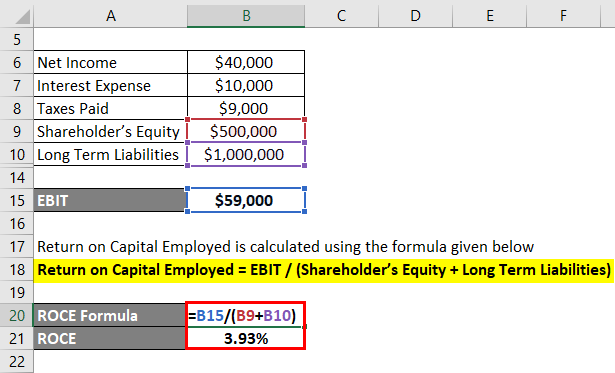
By organizing your revenue and costs into specific categories, you can generate accurate financial reports and gain valuable insights into your business’s financial performance. When you set up a company in QuickBooks, you gain access to powerful features designed to enhance financial management. This software offers various tools that allow businesses to seamlessly track and handle income statement their income, expenses, bills, and invoices in one convenient location. With the ability to automate tasks such as data entry and bank reconciliation, QuickBooks simplifies financial processes, minimizes the risk of errors, and ultimately saves valuable time.

Step 4: Configure your chart of accounts
- Select the appropriate Detail Type – in this case we will select Checking for a bank checking account.
- You’ll need to sign-up for a new QuickBooks Online account to create another company.
- Additionally, consider your approach to marketing and advertising for your business.
- QuickBooks streamlines tax preparation by organizing financial information in a structured and easily retrievable format.
- QuickBooks’ friendly setup wizard starts by asking you to enter basic business information the first time you log into your new software.
A company file in QuickBooks serves as the financial management hub for a business, housing all the financial data and records necessary for accurate bookkeeping and reporting. According to current entrepreneurs, the most beneficial financial tasks they regret not starting earlier are monitoring expenses, managing inventory, and creating invoices. As cash flow is vital for business commencement, it is essential to have a budget spreadsheet and a balance sheet in place. Additionally, utilising accounting software can simplify and streamline these tasks, providing a clear overview of incoming and outgoing funds. Connecting your bank accounts to QuickBooks allows you to streamline your bookkeeping process by automatically importing your bank transactions into the software. This not only saves time but also helps ensure the accuracy of your financial records.
- When deciding on the suitable QuickBooks version, it’s essential to assess the company’s size, industry-specific requirements, and future growth aspirations.
- Should someone get injured on your property, you may not be held personally liable for the damages.
- Deploy a private cloud if required to access your data by internet connection.
- There’s plenty of information at your fingertips to help you make the most of your QuickBooks account, starting with these.
- YNAB is good for small business owners who want a laser focus on cash flow.
- You can learn more on the basics of QuickBooks Online by downloading our free EBook “The Simple Guide to Getting Started in QuickBooks Online, and Avoiding the Most Common Mistakes New Users Make”.
- In order to launch a small business, it is essential to generate an idea that sparks your interest and has the ability to draw in customers.
Related Articles
To switch to a different company, select Settings and then Switch company. Yes, doola Bookkeeping helps you prepare for tax season with tools and expert support. By streamlining your financial processes, doola Bookkeeping frees you from tedious data entry and confusing spreadsheets, allowing you to focus on the parts of your business you truly love.
- High-volume enterprises often need automated workflows, bulk processing capabilities, and reliable integrations to handle large data sets efficiently.
- Now, go ahead and explore the various features of QuickBooks to streamline your financial management and gain valuable insights into the financial health of your small business.
- If you’re new to QuickBooks, make sure to take advantage of the free setup assistance.
- Many small business owners outsource their accounting to a bookkeeper or chartered accountant.
- Setting up QuickBooks may seem daunting at first, but with the right guidance, you’ll be up and running in no time.
- Again, you’ll have to do some research to find out what you qualify for and how to apply.
Free E-book: How to pay less taxes
- If you’re going into business with a partner, then you will need to register as a business partnership or limited partnership.
- This not only saves time but also helps ensure the accuracy of your financial records.
- This is where you can enter or update the official name of your business and upload a logo.
- You can also borrow against a business credit card or a personal line of credit.
- QuickBooks also gives you the option to skip any aspects of set up if you’d like to take care of them later.
However, most small businesses will continue to have a physical location for business operations in some capacity. If you’re preparing to open a brick-and-mortar food or retail business, picking the right location is extremely important. It might be tough at first to trust other people with your business. But if you hire great employees, how to set up a new company in quickbooks you’ll question why you didn’t hire them sooner.

If you plan on going after investors or financing for your business, you’ll want to create an elevator pitch. Take advantage of a business plan template to make the whole process easier. On the “Account and Settings” tab, select “Sales” and then “Sales Form content.” This setting will tell customers when you expect them to pay you. Your selected duration will become your default net payment term, within which your customers must pay you. To input a company name into QuickBooks, access your account and navigate to the “Settings” menu.


As a small business owner, managing your finances effectively is crucial for the success and growth of your venture. QuickBooks is an accounting software that helps you track income and expenses, manage invoices, and generate financial reports. This vital process allows businesses to store essential information about their customers and vendors, such as names, addresses, phone numbers, email addresses, and payment terms. It enables the accurate recording of transactions, including invoices, bills, and Food Truck Accounting payments for effective financial tracking. This process is crucial for ensuring that all financial transactions are accurately recorded and categorized for easy tracking and reporting. It begins with the initial decision to set up the company profile, followed by entering basic business information such as the company name, address, and industry type.








